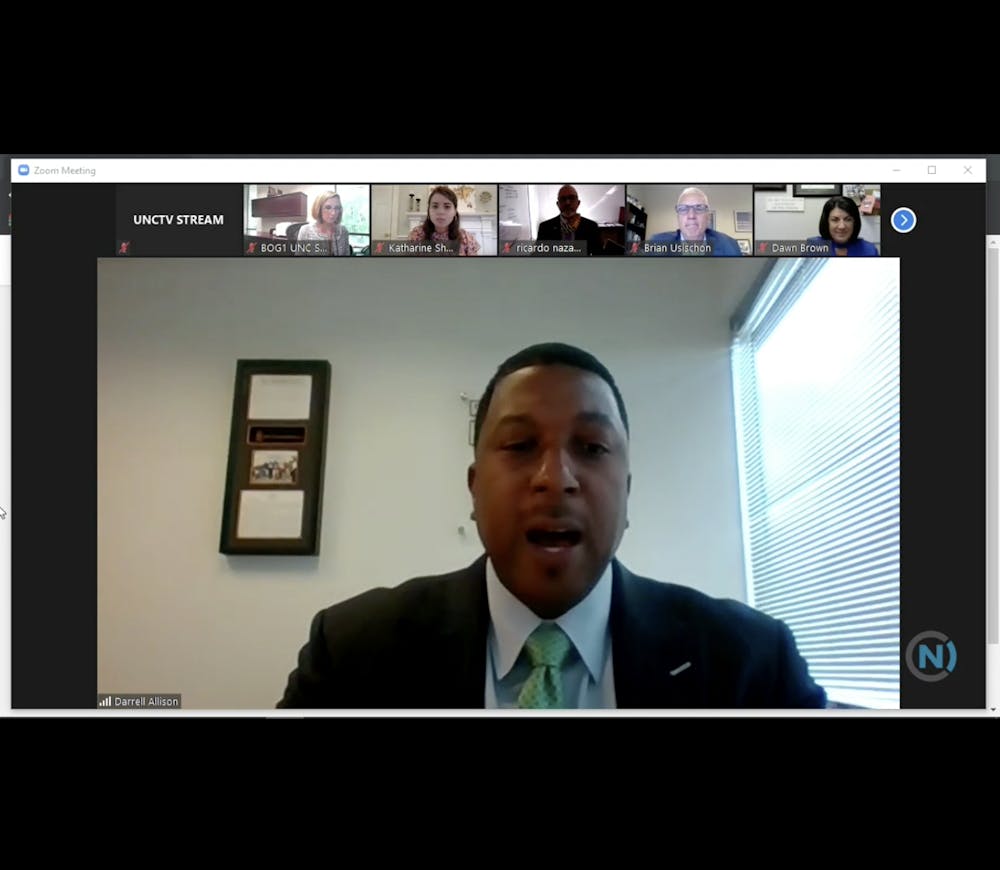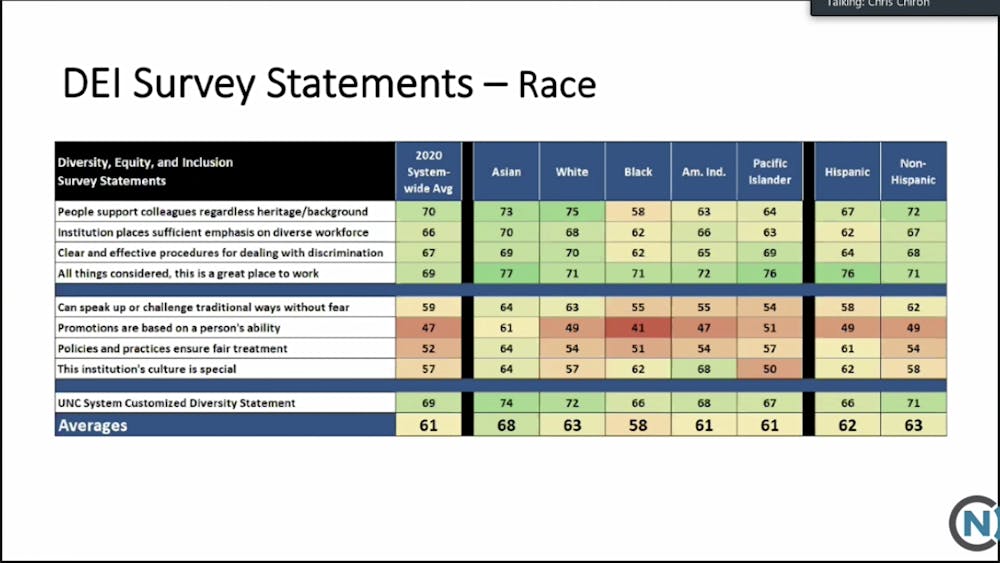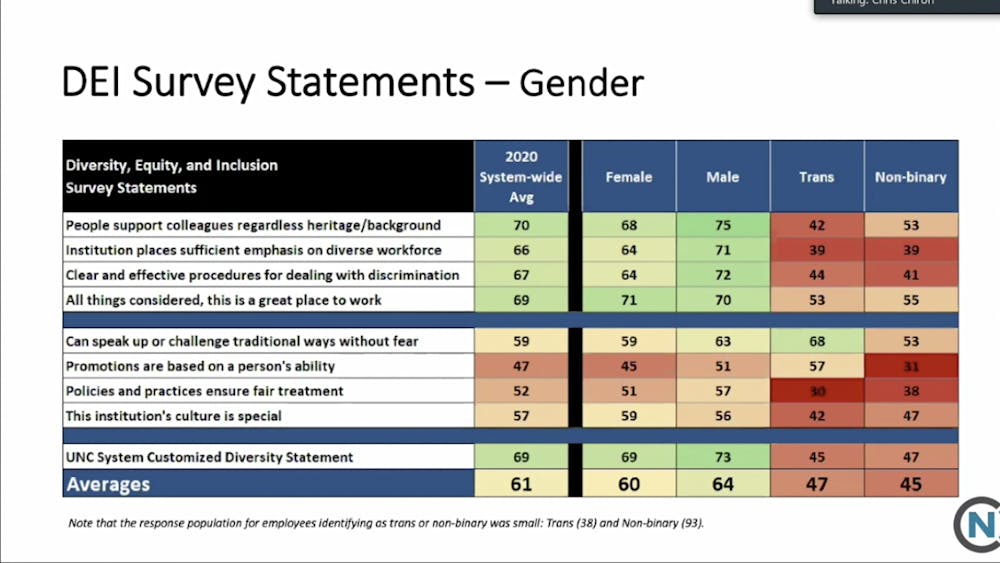The UNC Board of Governors Racial Equity Task Force met for the first time Thursday to outline the group's mission and the work it plans to do over the next several months.
The task force was created last month when now-task force members David Green of the UNC System Faculty Assembly, Garrett Killian of the UNC System Staff Assembly and Isaiah Green of the UNC Association of Student Governments sent a letter to the Board of Governors Chairperson Randy Ramsey on June 8 in the wake of the murder of George Floyd. The letter requested the creation of the task force, which Ramsey approved the next day.
The group is made up of several board members, including the task force chairperson Darrell Allison, Kellie Blue, Anna Nelson and Pearl Burris-Floyd, UNC Chief of Police David Perry and other members of the UNC System.
"As leaders of the university community, it is our obligation to do the work needed to address inequities in the UNC System for the benefit of our students, faculty, staff and all North Carolinians," Ramsey said at the start of the meeting. "This work is vital to our students' success, and to promote excellence and diversity in our institutions."
Allison said the task force will focus on three key areas to define its work: equity in student recruitment, enrollment and success outcomes; recruiting and retaining "diverse and equity minded practitioners and leaders;" and creating safe and inclusive campuses.
The task force will spend the month of July defining its responsibilities, and then in August and September the group will hold conversations on different UNC System campuses and give a statewide survey, before delivering a list of recommendations to Ramsey and the BOG in October.
The task force spent most of Thursday's meeting listening to two presentations, the first of which presented information from a 2019 report on North Carolina's "leaky" educational pipeline.
The second presentation focused on the UNC System employee engagement survey and compared responses from 2020 and 2018 to several statements and how much survey takers agreed or disagreed with them.





